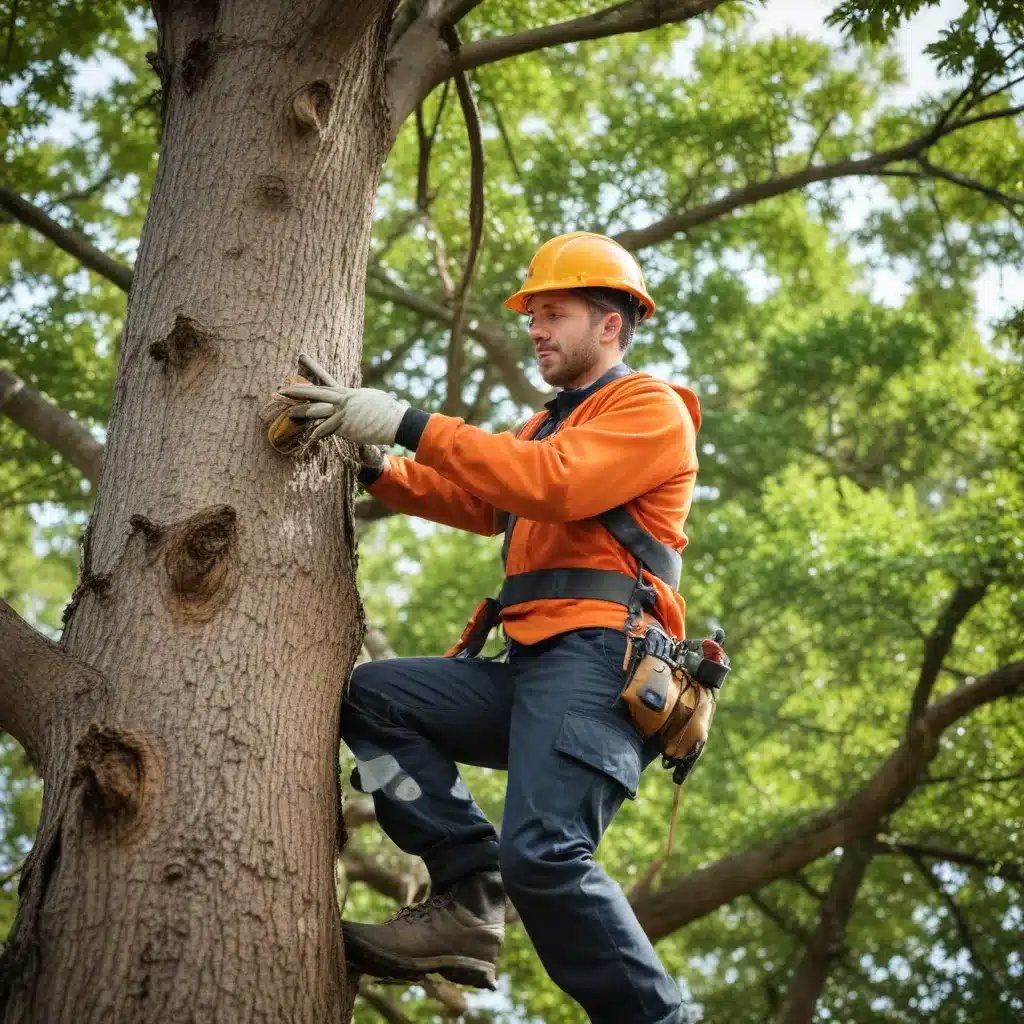
As a tree care specialist at TriCounty Tree Care, I’m often asked about the nuances of do-it-yourself (DIY) tree maintenance. While a hands-on approach can seem appealing, it’s crucial for homeowners to understand the legal and safety implications before undertaking such tasks. In this comprehensive article, we’ll delve into the key considerations and best practices to ensure your DIY tree work is conducted safely and in compliance with local regulations.
Legal Considerations for DIY Tree Maintenance
Relevant Laws and Regulations
Navigating the legal landscape surrounding tree care can be a complex undertaking for homeowners. Each municipality may have its own tree ordinances that dictate the rules and regulations governing tree maintenance, removal, and preservation. These ordinances often stipulate permitting requirements, protected tree species, and restrictions on tree cutting or trimming. Furthermore, homeowner association (HOA) guidelines may impose additional regulations that homeowners must adhere to.
Before embarking on any DIY tree work, it’s essential to familiarize yourself with the applicable laws and regulations in your local area. Failure to comply with these guidelines can result in hefty fines, legal action, or even the requirement to replant trees. Consulting with TriCounty Tree Care or your local municipal authorities can help you navigate these complexities and ensure your DIY efforts align with the relevant statutes.
Liability Concerns
Undertaking tree maintenance on your own property also carries inherent liability risks. Personal injury to yourself or others, as well as property damage, can arise from improper tree removal, pruning, or handling of debris. Should an accident occur, you may be held legally responsible for any resulting harm or losses.
Homeowner’s insurance policies typically provide coverage for tree-related incidents, but the extent of this coverage can vary. It’s crucial to review your policy and understand the specific exclusions or limitations regarding DIY tree work. Consulting with your insurance provider can help you identify potential gaps in coverage and determine if additional protection is necessary.
Safety Aspects of DIY Tree Work
Hazard Identification
Before attempting any DIY tree maintenance, it’s crucial to conduct a thorough assessment of potential hazards. This includes identifying the presence of overhead power lines, which pose a significant risk of electrocution if inadvertently contacted during tree removal or pruning. Additionally, evaluating the structural integrity of the tree, such as signs of decay or instability, can help you determine if the task is within your capabilities or if professional intervention is required.
Improper handling of chainsaws and other tree removal equipment can also lead to severe injuries. Familiarizing yourself with the proper techniques and safety protocols is essential to mitigate these risks.
Proper Equipment and Techniques
Effective and safe DIY tree maintenance requires the use of appropriate tools and equipment. This includes chainsaws with safety features, ropes and harnesses for elevated work, and personal protective equipment (PPE) such as helmets, gloves, and eye protection.
Equally important is the mastery of proper techniques. Improper cutting angles, excessive force, or lack of support can result in uncontrolled tree falls, limb breakage, or the creation of hazardous situations. Seeking guidance from TriCounty Tree Care or consulting educational resources can help you develop the necessary skills to handle these tasks safely.
Environmental Impact of DIY Tree Maintenance
Preserving Tree Health
While DIY tree maintenance can be tempting, it’s crucial to understand the potential impact on the overall health and longevity of the trees on your property. Incorrect pruning practices, such as improper cutting or excessive removal of foliage, can severely compromise a tree’s structural integrity and susceptibility to diseases and pests.
Consulting with a certified arborist or following industry-approved pruning best practices can help ensure your DIY efforts promote the long-term vitality of your trees. Addressing issues like pest infestations or fungal diseases in a timely and effective manner is also essential for maintaining the ecological balance of your landscape.
Sustainable Disposal of Debris
The proper disposal of tree debris is another important consideration for DIY tree maintenance. Composting or chipping and mulching the materials can provide valuable nutrients for your soil and minimize the environmental impact of landfill disposal. Conversely, improper handling or burning of debris can release harmful emissions and disrupt local ecosystems.
TriCounty Tree Care is committed to sustainable practices and can offer guidance on the most environmentally responsible methods for disposing of tree waste generated from your DIY projects.
Hiring Professional Tree Services
Credentials and Licensing
While DIY tree maintenance may seem like a cost-effective option, the expertise and specialized equipment of professional tree services can provide significant benefits. Certified arborists possess the knowledge and skills to assess the condition of your trees, identify potential hazards, and develop a comprehensive plan for their care.
Furthermore, reputable tree care companies like TriCounty Tree Care maintain the necessary business licenses and adhere to industry standards, ensuring their work is conducted in compliance with local regulations and safety protocols.
Scope of Work and Pricing
When considering hiring professional tree services, it’s important to carefully evaluate the scope of work and pricing estimates. A thorough assessment by a TriCounty Tree Care specialist can help you understand the specific needs of your trees and the recommended course of action, whether it’s pruning, removal, or disease treatment.
Obtaining multiple quotes and negotiating the contract can help you find a balance between quality service and cost-effectiveness. While DIY efforts may seem more budget-friendly, the potential risks and long-term consequences of improper tree care often outweigh the initial savings.
In conclusion, navigating the legal and safety considerations of DIY tree maintenance requires a nuanced understanding of local regulations, hazard identification, and environmental impact. By educating yourself on these factors or consulting with the experts at TriCounty Tree Care, you can make informed decisions that prioritize the health and safety of your trees, your property, and your community. Remember, investing in professional tree services can be a wise long-term decision that protects your investment and the ecological integrity of your landscape.


